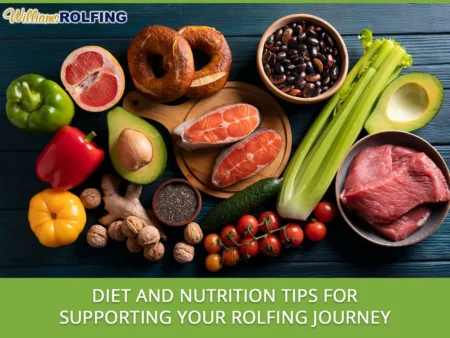
Rolfing Structural Integration, a holistic approach to improving body alignment and function, has gained recognition for its effectiveness in addressing chronic pain, improving posture, and enhancing overall well-being, particularly in the Tampa Bay area. While the manual therapy sessions focus on manipulating the body’s connective tissues, incorporating certain diet and nutrition practices can significantly enhance the benefits of your Rolfing journey.
Understanding Connective Tissue Health
Connective tissues, including fascia, tendons, and ligaments, play a crucial role in the structural integrity of our bodies. These tissues support, bind, and protect our organs and other structures, making their health vital for overall physical well-being. Nutrition can directly impact the health of connective tissues, affecting their strength, elasticity, and ability to repair.
Hydration: The Foundation of Connective Tissue Health
Hydration is paramount for maintaining the health of connective tissues. Water helps maintain the elasticity and suppleness of fascia, which is essential for the smooth movement of muscles and joints. Aim for at least 8-10 glasses of water a day, and consider incorporating hydrating foods like cucumbers, celery, and watermelon into your diet.
Nutrients That Support Connective Tissue
1. Vitamin C: An essential nutrient for collagen production, vitamin C supports the repair and regeneration of tissues. Include a variety of fruits and vegetables rich in vitamin C in your diet, such as oranges, strawberries, bell peppers, and broccoli.
2. Protein: Adequate protein intake is crucial for the maintenance and repair of connective tissue. Lean sources of protein, such as chicken, fish, tofu, and legumes, provide the amino acids necessary for collagen synthesis.
3. Omega-3 Fatty Acids: These essential fats possess anti-inflammatory properties that can help reduce inflammation in tissues. Sources of omega-3s include fatty fish like salmon and mackerel, flaxseeds, chia seeds, and walnuts.
4. Zinc: Zinc plays a role in collagen synthesis and tissue healing. Foods rich in zinc include beef, pumpkin seeds, lentils, and chickpeas.
5. Manganese: This mineral is involved in the production of collagen and the protection of tissues from oxidative damage. Whole grains, nuts, and leafy green vegetables are good sources of manganese.
Foods to Embrace
A diet supporting structural integration therapy should focus on whole, nutrient-dense foods that provide the vitamins and minerals essential for connective tissue health. Emphasize:
– Fruits and Vegetables: A colorful array of fruits and vegetables will ensure you’re getting a wide range of nutrients, including antioxidants that protect tissues from damage.
– Quality Proteins: Incorporate both animal and plant-based proteins to supply the amino acids needed for tissue repair.
– Healthy Fats: Avocados, nuts, seeds, and olive oil provide healthy fats that support cellular health and reduce inflammation.
Foods to Avoid
Just as some foods can support your journey, others may hinder the healing process. Limit or avoid:
– Processed Foods: High in unhealthy fats, sugars, and additives, these can increase inflammation and negatively impact tissue health.
– Sugar: Excessive sugar intake can lead to inflammation and disrupt the balance of nutrients needed for tissue repair.
– Alcohol: Alcohol can dehydrate the body and impair the healing process. Moderation is key.
Lifestyle Tips for Enhanced Results
1. Mindful Eating: Pay attention to how your body responds to different foods and adjust your diet accordingly to support your journey.
2. Balanced Meals: Ensure each meal includes a good balance of macronutrients (proteins, fats, carbohydrates) and micronutrients (vitamins, minerals) to support overall health.
3. Consistency: Dietary changes take time to show effects. Be consistent with your nutrition efforts to see gradual improvements in your outcome.
Integrating these diet and nutrition tips into your lifestyle can significantly support your Rolfing journey, enhancing the body’s ability to heal, regenerate, and maintain healthy connective tissues. As you embark on this holistic path to improved body alignment and well-being, remember that your diet plays a crucial role in supporting the physical changes and benefits achieved through Rolfing. By nourishing your body with the right foods, you can enhance your results, making each step of your journey even more rewarding.
For those in the Tampa Bay area seeking to embark on or continue their journey, Williams Rolfing offers a personalized and professional approach to Rolfing Structural Integration. Their expertise and dedication to individual health and wellness can guide you through the transformative process, complemented by tailored nutritional advice to support your body’s needs.
As you explore the benefits of Rolfing in Tampa Bay and integrate these nutritional recommendations, remember that the journey to improved health and alignment is a comprehensive one, involving both the physical manipulations of Rolfing and the supportive elements of diet and nutrition.
Picture Credit: Freepik
